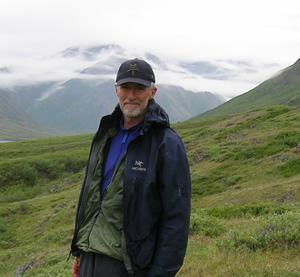
You’ve probably heard it before: social and environmental scientists use completely different languages; they have different cultures; you’ll never get them to work together.
Dr. N. Thompson (Tom) Hobbs disagrees. These two communities do in fact share an important commonality: math. (Scratching your head? Read on …)
The National Socio-Environmental Synthesis Center (SESYNC) welcomed Dr. Hobbs to our Annapolis, Maryland center last week to begin his first of two visits-in-residence. He arrived just in time for our first snow day closure of the winter—surely a strange event for Dr. Hobbs, who is from Colorado, given our lack of snow accumulation. A Senior Research Scientist at the Natural Resource Ecology Laboratory with a joint appointment in the Department of Ecosystem Science and Sustainability at Colorado State University, Dr. Hobbs’ work focuses on population and community ecology of large mammals, both predatory and herbivorous. Virtually all of his work seeks to gain insight into ecological processes by assimilating models with data.
He is particularly excited about how scientists from various disciplines can apply Bayesian modeling—to (over)simplify, math—to solve environmental problems, including those with a strong social component.
“All you need to know about Bayes,” Dr. Hobbs says, “is that it’s about probabilities. To the extent that you have some intuition for what it means by saying there’s a 90% chance it’s going to rain tomorrow, you’ve got a great start for understanding Bayes. That’s what Bayes seeks to understand: the probability distributions of quantities of interest.”
Dr. Hobbs frequently works with national parks by helping them evaluate alternatives for different kinds of management actions. At the end of the day, he says, the central problem for environmental management is making a decision between two or more courses of action, or no action at all, to meet a specific goal. For example, a park might have a goal that their elk population be between 600–800 individuals. Concerned about the impacts of an overabundant elk population on the biodiversity of the park, park officials might consider culling that population. In these cases, Dr. Hobbs uses a Bayesian model to make forecasts that have a statement of probability associated with them—i.e., he would estimate the probability that, based on available data, how certain actions or non-actions would impact the elk population over time.
“Let’s say you don’t cull any animals at all,” he explains. “Then the probability that you’re going to be outside the range of acceptable values [population numbers] in three years is, say, 50%. If you cull 10 animals, it would be 10%. That sort of thing.
So now, [park officials] have a decision to make that’s based on values and judgment informed by, probabilistically, the future state of the population.”
During his first two-month stay at SESYNC, Dr. Hobbs will be working on a book that explains these principles of Bayesian modeling to ecologists. What the book, co-authored by Dr. Mevin Hooten, seeks to do is give ecologists the fundamental statistical and mathematical understanding they need to use and evaluate Bayesian models, to interpret them in literature, and to review papers and proposals that use them.
Dr. Hobbs will return to SESYNC in 2014–15, during which time he anticipates proposing a short course that would inform how both social and environmental scientists could use Bayesian approaches in their own work. He also has ideas for synthesis research Themes, under which SESYNC could fund several Pursuit groups. Throughout both visits, he will also interact with SESYNC’s staff scientists and postdoctoral fellows as well as other visiting scholars funded under SESYNC projects.
Those interested in contacting Dr. Hobbs about his SESYNC residence can reach him via email at tom.hobbs@colostate.edu
About SESYNC
The National Socio-Environmental Synthesis Center (SESYNC) is a national research center funded through a National Science Foundation grant to the University of Maryland.
Located in Annapolis, Maryland, SESYNC is dedicated to solving society’s most challenging and complex environmental problems. We foster collaboration amongst scholars from a diverse array of the natural and social sciences (such as ecology, public health, and political science), as well as stakeholders that include resource managers, policy makers, and community members.
Learn more at www.sesync.org.